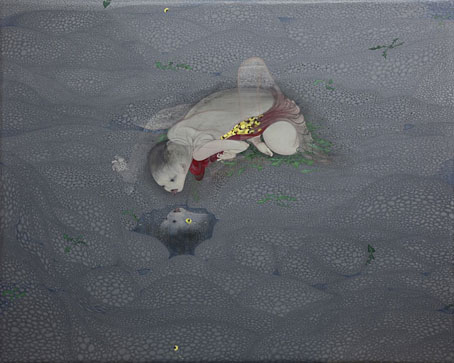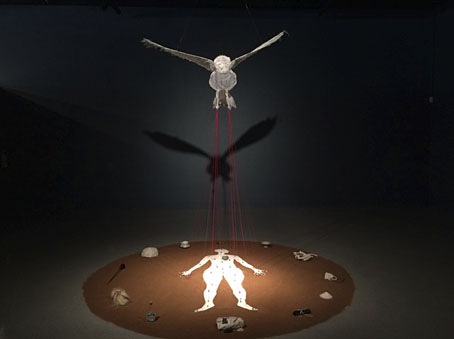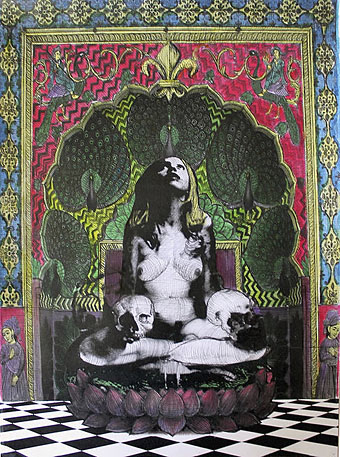Nocturnal Rome — Trajan’s Column (1934) by MC Escher.
• Many eulogies this week for the late, great Mark E Smith. Strangers to the abrasive splendour of The Fall could do worse than begin with Geeta Dayal‘s list of ten best albums. At YouTube there’s a playlist of The Fall’s Peel Sessions, from 1978 to 2004, while The Fall Quote Generator provides fragments of lyrics and interviews. “Use it like the I Ching.”
• Books with poisoned pages are usually the stuff of fiction but Shadows from the Walls of Death: Facts and Inferences Prefacing a Book of Specimens of Arsenical Wall Papers (1874) by RC Kedzie presents a serious health hazard to would-be readers.
• Man Ray: “There was more surrealism rampant in Hollywood than all the surrealists could invent in a lifetime.” Kimberly Lindbergs looks at Albert Lewin’s 1951 fantasy, Pandora and the Flying Dutchman.
• At Towleroad: “The Most Dangerous Gay Man In America Fought Violence with Violence” Eric Markowitz on the Reverend Raymond Broshears, founder in 1973 of the Lavender Panthers.
• Coming in April from Strange Attractor: All in the Downs: Reflections on Life, Landscape and Song by Shirley Collins.
• Mixes of the week: Secret Thirteen Mix 244 by Daniel O’Sullivan, and XLR8R Podcast 526 by Jamaica Suk.
• At Dennis Cooper‘s this week, a post I might have made myself (but, er, didn’t) about mirrored works of art.
• A preview of Strange Stars: David Bowie, Pop Music and the Year Sci-Fi Exploded by Jason Heller.
• “We live in Philip K Dick’s future, not George Orwell’s or Aldous Huxley’s,” says Henry Farrell.
• Was For Your Convenience (1937) by Paul Pry the first queer city guide?
• Fall (1967) by Miles Davis | Fall (2011) by The Haxan Cloak | Fall (2014) by The Bug feat. Inga Copeland





